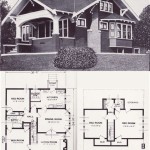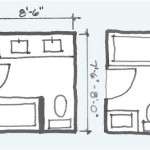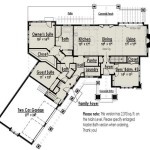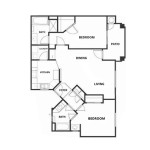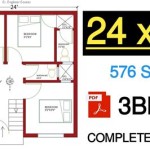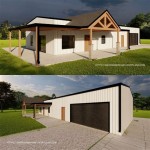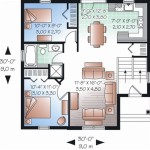Small House Plans With 2nd Floor Balcony: Maximizing Space and Style
The appeal of small house living continues to grow, driven by factors like affordability, environmental consciousness, and a desire for simpler lifestyles. Combining compact living with the luxury of outdoor space, small house plans incorporating a second-floor balcony offer a compelling solution for maximizing both functionality and aesthetic appeal. This article explores the considerations and benefits of such designs, delving into key aspects of layout, structural integrity, and design elements.
Optimizing Space Through Strategic Layouts
The design of a small house with a second-floor balcony hinges on efficient space utilization. Every square foot must be purposefully allocated to avoid a cramped or cluttered feeling. Open-concept living areas, with the kitchen, dining, and living spaces flowing seamlessly into one another, are often employed to create a sense of spaciousness. Vertical space becomes particularly valuable, and the second floor, accessible via a staircase designed to minimize its footprint, is crucial for accommodating bedrooms and potentially a shared bathroom.
The placement of the balcony in relation to the interior layout is equally important. Typically, the balcony is accessible from the master bedroom or a shared living space on the second floor. Careful consideration must be given to the orientation of the balcony; a south-facing balcony will maximize sunlight exposure, while an east-facing balcony offers pleasant morning sun. The balcony's size directly impacts its usability. A narrow balcony may only accommodate a single chair, while a larger balcony can function as an outdoor dining or relaxation area.
Interior organization is further enhanced by built-in storage solutions. Custom cabinetry, shelving units, and under-stair storage can significantly reduce clutter and free up valuable floor space. Multi-functional furniture, such as sofa beds or storage ottomans, also contributes to maximizing the utility of each room. The strategic placement of windows and skylights is crucial for optimizing natural light, which significantly contributes to the feeling of spaciousness. Light-colored paint and finishes further enhance the effect of natural light, making the interior feel brighter and more open.
The staircase design is a critical element in small house layouts. Spiral staircases or alternating tread stairs can minimize the floor space consumed by the staircase while still providing safe and comfortable access to the second floor. The staircase can also be integrated with storage solutions, such as drawers or shelves built into the stair treads or risers.
Structural Considerations for Balcony Integration
Integrating a second-floor balcony into a small house plan requires careful attention to structural integrity. The balcony must be designed to withstand both live loads (people and furniture) and dead loads (the weight of the balcony itself). The structural support for the balcony typically relies on cantilevering the balcony floor joists out from the main floor joists of the house or supporting the balcony with posts and beams. The choice of structural system depends on the size and configuration of the balcony, as well as the overall design of the house.
Building codes dictate specific requirements for balcony construction, including load-bearing capacity, railing height, and the spacing between railing elements. It is essential to consult with a qualified structural engineer to ensure that the balcony design meets all applicable building codes and safety standards. The engineer will perform calculations to determine the appropriate size and spacing of the floor joists, beams, and columns, as well as the type and size of fasteners required to connect the balcony to the main structure of the house.
The choice of materials for the balcony construction also impacts its structural integrity. Wood, steel, and concrete are common materials used for balcony construction, each with its own advantages and disadvantages. Wood is a relatively inexpensive and readily available material, but it is susceptible to rot and insect damage if not properly treated. Steel is a strong and durable material, but it is more expensive than wood and requires specialized welding skills. Concrete is a durable and fire-resistant material, but it is heavy and requires specialized formwork for construction.
Waterproofing is another critical consideration in balcony construction. The balcony floor must be properly waterproofed to prevent water from seeping into the structure of the house, which can lead to rot, mold, and structural damage. Common waterproofing methods include applying a waterproof membrane to the balcony floor, installing a drainage system to remove water from the balcony surface, and using water-resistant materials for the balcony decking.
Design Elements and Aesthetic Considerations
The design of a small house with a second-floor balcony presents numerous opportunities to incorporate aesthetic elements that enhance the overall appeal of the house. The architectural style of the house, the materials used for the exterior cladding, and the detailing of the balcony railings all contribute to the overall aesthetic of the house. The balcony itself can become a focal point of the house, adding visual interest and curb appeal.
The railing design significantly impacts the balcony's aesthetic appeal. Traditional railings are typically made of wood or metal and feature simple vertical or horizontal balusters. Modern railings often incorporate glass panels or cable railings, which provide unobstructed views and create a sleek and contemporary look. The choice of railing design should complement the architectural style of the house and the surrounding landscape.
The balcony decking material also contributes to the overall aesthetic. Wood decking, such as cedar or redwood, provides a warm and natural look. Composite decking, made from recycled plastic and wood fibers, is a low-maintenance and durable alternative to wood. Tile or stone decking can create a more sophisticated and luxurious look.
Outdoor lighting can enhance the ambiance of the balcony and make it more usable at night. String lights, recessed lighting, or sconces can be used to create a warm and inviting atmosphere. Landscape lighting can also be used to highlight the surrounding landscape and create a visually appealing backdrop for the balcony.
Incorporating landscaping elements, such as potted plants, hanging baskets, or vertical gardens, can further enhance the aesthetic appeal of the balcony and create a more inviting outdoor space. The choice of plants should be appropriate for the climate and the amount of sunlight that the balcony receives. Low-maintenance plants, such as succulents or herbs, are a good choice for balconies with limited space or time for gardening.
The color palette of the exterior elements of the house, including the siding, trim, and balcony railings, should be carefully considered to create a cohesive and visually appealing design. Neutral colors, such as white, gray, or beige, are a popular choice for small houses, as they create a sense of spaciousness and allow the landscaping and other design elements to stand out. Accent colors can be used to add pops of color and visual interest.
Privacy is another important consideration in balcony design. Depending on the location of the house and the proximity of neighboring properties, privacy screens or trellises may be necessary to create a more private and secluded outdoor space. The choice of privacy screen should complement the architectural style of the house and the surrounding landscape.
Finally, the integration of sustainable design principles can further enhance the appeal of a small house with a second-floor balcony. Using sustainable materials, such as reclaimed wood or recycled content decking, can reduce the environmental impact of the construction. Designing the balcony to maximize natural light and ventilation can reduce the need for artificial lighting and air conditioning. Incorporating rainwater harvesting systems can collect rainwater from the balcony roof for use in watering plants or flushing toilets.

Modern House Design 2024005 Pinoy Eplans Two Y Plans Construction Plan

Small Two Y House Design With Wraparound Balcony Pinoy Designs

Havana Two Y House With Spacious Terrace Pinoy Eplans

Charming 2 Story Floor Plan With Balcony

Affordable Modern Two Story House Plan With Large Deck On Second Floor 9690

2nd Floor House Design With Balcony 4999 Easemyhouse

Contemporary Viron 480 Robinson Plans Carriage House Garage

Php 2024021 Two Y House Plan With Balcony Pinoy Plans

Compact Three Bedroom Double Y House Design For A Small Lot Pinoy Plans

Small Modern Home Plan With Upper Level Deck

